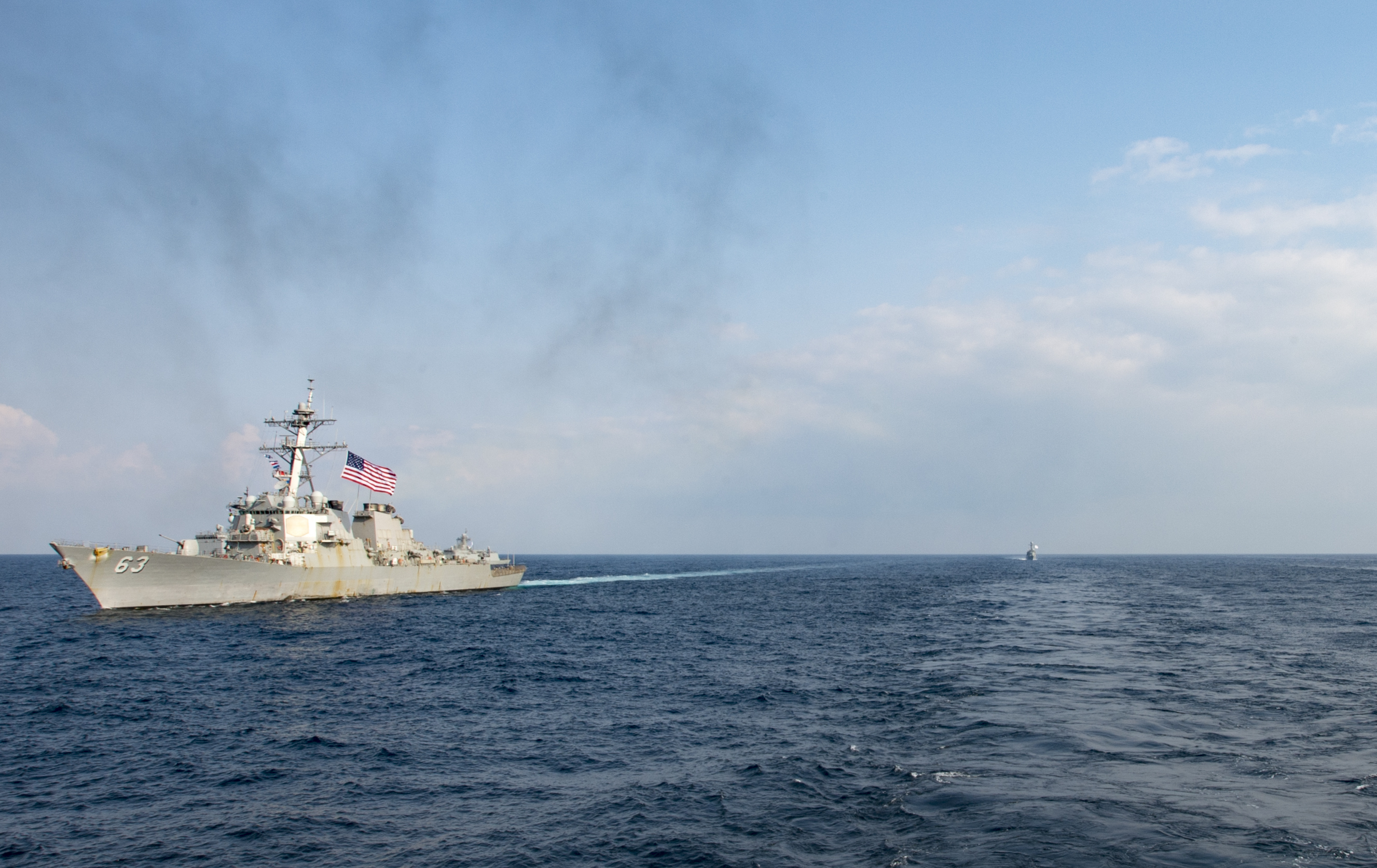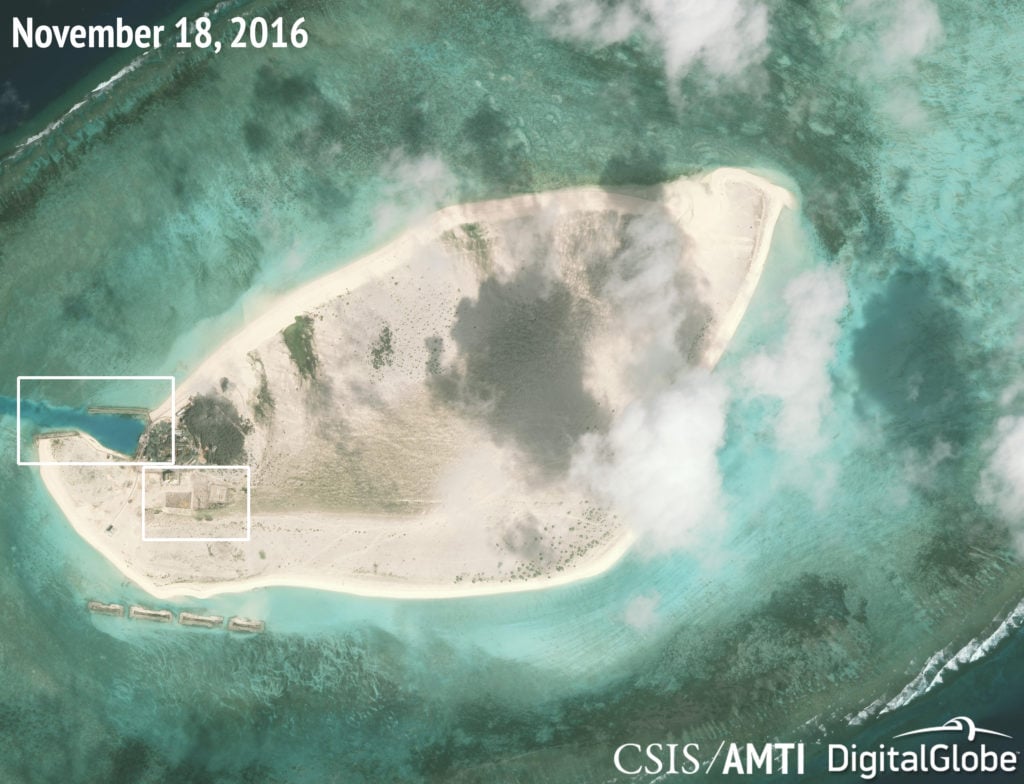
This post has been updated with a statement from U.S. Pacific Fleet.
A U.S. destroyer came within 12 nautical miles of a Chinese holding in the South China Sea, a U.S. defense official told USNI News on Sunday morning.
USS Stethem (DDG-63) passed by Triton Island in the Paracel Island chain on Sunday to test claims by not only Bejing but also Vietnam and Taiwan, the official confirmed to USNI News.
Since the Trump administration has begun testing excessive maritime claims in the South China Sea, Pentagon officials have repeatedly said they would not confirm reports of freedom of navigation operations outside of the yearly report that outlines the operations.
“U.S. forces operate in the Indo-Asia-Pacific region on a daily basis, including in the South China Sea. All operations are conducted in accordance with international law and demonstrate that the United States will fly, sail, and operate wherever international law allows. That is true in the South China Sea as in other places around the globe,” U.S. Pacific Fleet spokesman Lt. Cmdr. Matt Knight said in a statement to USNI News on Sunday.
“We conduct routine and regular FONOPs, as we have done in the past and will continue to do in the future. Summaries of these operations are released publicly in the annual DoD Freedom of Navigation Report, and not sooner.”
The passage was first reported Sunday morning by Fox News. Fox reported a Chinese warship shadowed Stethem during the transit.
While Pentagon officials are reticent to confirm details, it is likely Stethem conducted an innocent passage past Triton and tested Chinese requirement for prior notification before entering territorial waters and Beijing’s expansive claims around the Paracel Island chain.
“China claims illegal straight baselines that encircle the entire island group,” James Kraska, a professor of international law, oceans law and policy at the U.S. Naval War College’s Stockton Center for the Study of International Law told USNI News last year.
In October, USS Decatur (DDG-73) conducted a freedom of navigation operation that tested just the baseline. Vietnam and Taiwan also have claims to the territory which China has occupied since the 1970s.
In early 2016, USS Curtis Wilbur (DDG-54) came within 12 nautical miles of Triton Island in the Paracels — without prior notification.

“This operation challenged attempts by the three claimants, China, Taiwan and Vietnam, to restrict navigation rights and freedoms around the features they claim by policies that require prior permission or notification of transit within territorial seas. The excessive claims regarding Triton Island are inconsistent with international law as reflected in the Law of the Sea Convention,” the Pentagon said at the time.
Stethem’s transit follows a May operation in which USS Dewey (DDG-105) passed within six nautical miles of the Chinese installation on Mischief Reef in the boldest statement the U.S. has made to date in challenging China’s claims to its artificial islands.
Without prior notification, Dewey came within six nautical miles of Mischief Reef and conducted a man-overboard drill as part of the test of Chinese claims.
While China’s militarization of its chain of artificial islands in the Spratly Islands chain closer to the Philippines have drawn the most international concern, Beijing has also been installing military equipment in its Paracel Island chain closer to Vietnam.
USNI News understands in May the Office of the Secretary of Defense presented the National Security Council a schedule for future regional FON ops to create a menu of options for the NSC to choose from when U.S. assets are in the region.
The following is the July 2, 2017 complete statement from U.S. Pacific Fleet to USNI News.
U.S. forces operate in the Indo-Asia-Pacific region on a daily basis, including in the South China Sea. All operations are conducted in accordance with international law and demonstrate that the United States will fly, sail, and operate wherever international law allows. That is true in the South China Sea as in other places around the globe.
We have a comprehensive Freedom of Navigation Operations (FONOP) program under which U.S. Forces challenge excessive maritime claims across the globe to demonstrate our commitment to uphold the rights, freedoms, and uses of the sea and airspace guaranteed to all nations under international law.
FONOPs are not about any one country, nor are they about making political statements. In fiscal year (FY) 2016, we conducted FONOPs challenging excessive maritime claims of 22 different coastal States, including claims of allies and partners.
We conduct routine and regular FONOPs, as we have done in the past and will continue to do in the future. Summaries of these operations are released publicly in the annual DoD Freedom of Navigation Report, and not sooner.





